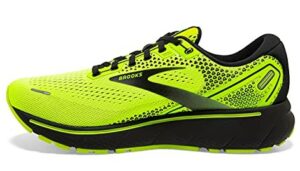Your running speed might be the first and most important part of your running training focus, or it could be a secondary thought after you’ve been working on your endurance. Either way, how to run faster is a question that all of us have, from seasoned runners to beginners looking to progress. The good news is that you don’t need a running coach or specialized equipment to work on your speed and running pace.
What training can you do to help you run faster and how can you improve your pace at all distances, without risk of injury?
Combining the right type of session, from recovery runs to interval training, with supplementary weight training and strength and flexibility, will help you become faster and increase your endurance and mental toughness, too. In fact, running faster is interlinked with developing muscular and cardiovascular capacity (such as your VO2 Max). This is why it’s recommended to look not just into running training, but also complimentary workouts that will increase your lactate threshold and running economy to help you get faster and better performances overall.
In this article, we’ll cover 7 top tips for building speed – from specific speed training sessions to any other workouts you can include to deliver this.
Train for Speed
To develop a faster pace, you need to train your cardiovascular system and muscular system to withstand higher-intensity efforts. This is why you need to add speed workouts to your training plan. Our advice is to start with the least specific type of speed work to your goal race at the beginning of your training cycle, and then become more specific as you advance towards race day.
For example, assume you’re building up to a 50K ultra-marathon. During the actual race, you may be running at faster speeds in the more runnable sections and then even power hike the steeper or more technical parts. Overall, you will not be running a 5K PB! So, you would ideally have sessions of 1- to 3-minute sprint workouts at the beginning of your training plan. As you get closer to race day, you can then progress to tempo runs of 10, 20, or even 30-minute efforts during a session.
Sprint sessions
As running coach and ultra-running expert Jason Koop points out, there are a multitude of scientific studies seeking to pinpoint exactly what type of sprint interval training can benefit runners. In the end, his five essential types of run training sessions, including efforts of 1-3 minutes at the top rate of perceived exertion you can withstand, appear to lead to increased average speed for endurance runners, as well as for those training for shorter races.
Running intervals builds aerobic capacity as well as muscle strength, as evidenced in several studies such as this 2016 medical review. Moreover, the more speed work you do during your weekly workouts, the easier and faster your long runs will become as well. This is because your body will have adapted to the maximum efforts, thereby finding your easy to medium pace much more acceptable for a longer period of time.
Here are some suggestions for training sessions to gain improvements in speed:
- Do track workouts if you have one near where you live: sprint 100m in a straight line, then walk/jog for recovery the next 100m. Repeat 5 times in a row, then do 5 minutes easy jog and start a new set. The bursts of speed should be at your maximum capacity, or the highest rate of perceived exertion you can deal with.
- Interval sessions with 2 minutes at fast pace, 1 minute recovery. Repeat 5 times, then follow up with 5 minutes easy jog. Do 1 to 3 sets, progressing as you start to feel you can go for longer at your maximum speed.
- Danish intervals: Run as fast as you can for 10 seconds, then at 80% intensity for 20 seconds, then at 70% intensity for the next 30 seconds. Don’t rest. Repeat immediately with the high-intensity effort, for a total of 5 times (so 5 minutes in total). Then do a recovery jog of 5-10 minutes before going again. These sessions have been effectively used by running coaches to improve VO2 Max and running economy in runners of all levels.
Fartleks
While the speed training sessions above are structured intervals, lots of runners prefer a more unstructured approach, where you pick random elements of the landscape to guide you on when to start and stop an interval. This is known as fartlek running and it can be very effective while adding some fun and mixing up your normal workouts. They are also great if you do one of your interval sessions on trails, where the irregular terrain won’t allow you to stick to very specific time slots for your speed work.
To do a fartlek on the road, simply perform your warm-up and then pick landmarks such as lamp posts or traffic lights to increase your speed at. Run in between them, for example, go as hard as you can from one block to the next, then use the next block for a recovery jog.
On trails, pick a trail marker or a funny-looking tree to start your speed interval. Slow down and recover once you hit another tree or tree stump or rock… you get the idea!
Fartleks are great for improving your mental endurance and race tactics, too. They make you more flexible at varying your pace when the terrain changes in a race, or when an opponent is overtaking you and you need to step on the gas. Check out some additional fartlek training ideas here.
Tempo runs
Especially when you’re training for longer distances, increasing your pace is not just about bursts of speed performed in short, sharp intervals. As you progress with your training plan, add some longer tempos, where the speed of running is not at the maximal level, but where you’re running faster than your desired race pace. Tempo workouts help increase your lactate threshold, i.e. the point where your body switches from aerobic to anaerobic and then quickly fatigues. The aim of tempos is to increase the length of time you can spend at your threshold pace.
To do a tempo workout, set off as you normally would with a 10-15 minute warm-up and follow up with 3 x 15 minutes at tempo pace, with 8 minutes recovery in between. Typically, the recovery period will be around half the length of the effort, so if you’re doing 20-minute tempos, recover for 10 minutes etc. You can mix in tempo workouts with hill training, e.g. 3 x 10 minutes at tempo pace up a hill, then recovery jog downhill.
Develop Good Running Form
Once you’ve got your training plan in place, it’s time to think about fine-tuning your running form to ensure you avoid overuse injuries and also improve your running economy. According to scientific studies, good running technique will help you waste less energy on your runs, improve your race times, and ensure that you don’t develop injuries and strains.
It’s a good idea to get a proper gait analysis to ascertain that you’re wearing the right running shoes with the proper shoe size and fit for your running stride for your stride type and to identify where your form may need to be worked on. If you don’t have a running coach, you can look at some YouTube videos for ideas of running form drills to perform before every speed session to get your body used to good form. This one has some great exercises.
Relax your shoulders, think about looking up and forward when running, and allow your arms to swing back and forth at the sides. Make sure you are not crossing your arms in front of you or allowing your upper body to swing from side to side when you increase your pace. Check out some of these Kenyan run drills for some additional warm-up exercises to help improve your form.
Strength Training Is Your Friend
In order to get faster, you also need to get stronger. This is why strength training workouts where you focus on developing good leg muscles and core stability should be an important part of your routine. Additionally, tempo runs will improve your strength, as will hill running.
Bodyweight exercises and explosive plyometric movements are great for building speed and sprinting power. Add jump squats, jump lunges and box jumps to your strength workouts to see an increase in explosive power.
At the same time, don’t neglect lifting weights for improvements in your running form and economy. Squats and lunges with dumbbells or barbells are ideal for this. Add some upper body strength exercises, such as tricep dips and push-ups, to ensure that your arms and shoulders are also in good shape and contribute to good form.
Finally, core training is essential to maintain your running posture and to keep you fit and injury-free. So make sure you do some core exercises with every strength session in the gym.
Cross-Train For Aerobic Fitness
Another way to gain speed is to develop your aerobic fitness by doing complementary cross-training workouts. This will keep you safe from overuse injuries as you’re not constantly running, while making sure you add some variety and fun in your workouts. See our post on How much running is too much here.
Stationary bike intervals are a great way to build both speed and strength. You can do these on your own or sign up for a spin class to have some fun with your friends, too! Longer rides outdoors will help your endurance, which in turn will help you run faster when you’re off the bike.
Another great cross-training sport for explosive power is rock climbing. In a climbing gym, practice bouldering, where you’re not climbing too high, but you’re relying on short, sharp movements to complete a route. It will build leg strength, which in turn can help you sprint faster.
Run Hills For Speed And Strength
Regardless of what type of race you’re training for, hill sessions can be a great way to build both strength and speed outside the gym. Especially if you’re doing a trail race, practicing on hills is essential for mental toughness, too: you’ll know you’re able to get to the top of steep climbs from training, so facing them on race day will be no problem at all.
For some good hill workouts, you can run tempos where you do 3 x 8-minute or 10-minute climbs at maximum speed, focusing on fast feet and power hiking as fast as you can (depending on how steep the hill is), then recover with an easy jog downhill.
Add a pyramid session to spice things up: pick a hill that you can run in up to 10 minutes, then do intervals of 1, 2, 4, 8 minutes up with recovery jogs, then 4, 2, 1 minutes. This will vary the intensity and help you work on your form at different levels of effort.
Don’t Neglect Rest
It’s easy to get caught up in the excitement of building up your running speed and endurance and start ignoring recovery days in your training plan. However, rest is extremely important for building speed and should be considered part of the plan.
In between hard efforts, especially hill sprints and interval sessions, your muscles will start to feel sore as a result of Muscle soreness and running which need to rebuild during your recovery days. Without days off, you’ll simply fatigue more and more and be unable to run hard when you need to. As a result, your overall running performance will plateau at best.
Struggling to be completely still on a rest day? Try some active recovery like a low-intensity walk (no more than 30-40 minutes) or an easy swim. Whatever you do, avoid anything strenuous like intense housework or a different cross-training workout that raises your heart rate and puts strain on your muscles.
Nail Your Nutrition And Hydration
Finally, adequate refueling with food and water must be part of any runner’s plan to ensure progression. Your diet influences your running speed according to research. Aim to have a balanced regime, consuming complex carbohydrates to fuel you before big workouts and including protein to recover afterward.
Focusing on clean, healthy foods that provide good-quality macro and micronutrients is very important ahead of races and during periods of intense training. Similarly, ensuring that you hydrate properly is essential in hot climates and ensures proper overall body functions. You can read more in our Nutrition for runners.
Increase Your Running Speed With The Right Workout Plans
Staying consistent in your training and following a structured training plan is one of the key ways to see progress in your cardiovascular fitness, which will translate into faster running and better race times. However, don’t do too much too soon and don’t neglect your rest and nutrition requirements! Follow our tips and make sure you’re always adding variety and fun into your workouts so you keep progressing while wanting to come back for more.


























